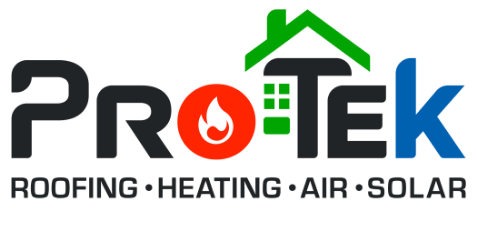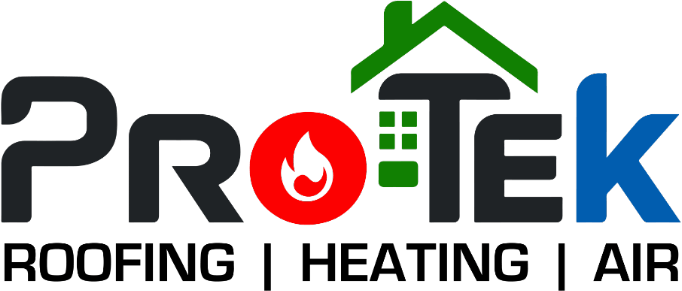Poor indoor air quality can affect everyone in your home, including your pets. Ensuring you have healthy air to breathe is crucial. It may surprise you that the air in your home is often many times worse than the air outside. We’ve compiled a few simple tips for improving indoor air quality so you can work toward keeping your home as healthy as possible.
1. Regular Ventilation
Making sure that the space in your home is well-ventilated is essential for good air quality. Some may underestimate the significance of proper ventilation. Over time, an indoor space has the potential to accumulate a large variety of contaminants.
Regularly opening doors and windows, even during cold months, makes a huge difference. This act encourages fresh air to circulate, which decreases accumulated indoor pollutants. By allowing outside air to come inside, you refresh the area and mitigate potential health hazards.
2. Invest in an Air Purifier
If the spaces in your home are uncomfortable and you feel like it is a struggle to get fresh air, you may want to invest in an air purifier. Finding a good one is easy to do, and you should immediately see a change in the air quality. A high-quality air purifier will have HEPA filters, so you can significantly reduce the presence of harmful particles in the air. These filters capture tiny pollutants, like pollen or pet dander, that can make you feel sick or compromise your respiratory health. A good purifier will aid in creating a fresher and cleaner living space.
At Protek Roofing, Heating, Air & Solar, we offer several products and services to improve indoor air quality. Whole-hour air cleaners and electronic filters trap harmful particulates. If you’re concerned about bacteria and mold circulating in the air, we offer UV light purification installed inside your air ducts.
3. Reduce Tobacco Use
If someone smokes in your home, it can severely compromise the indoor air quality. Smoking indoors affects the well-being of everyone in the home. Secondhand smoke is a mixture that contains over 7,000 chemicals. Many of these chemicals are toxic and have known links to major health issues, such as cancer. These chemicals get trapped in fabrics and on walls, causing lingering issues. Abstaining from smoking indoors can greatly improve the air quality.
4. Limit Use of Aerosols and VOCs
Volatile Organic Compounds (VOCs) are in many home products. Common sources of VOCs are paints, cleaners, air fresheners, and aerosol sprays. Breathing in high levels of VOCs can give you and your family irritated throats and many other health conditions. Choosing products for your home with low or no VOCs helps create a healthier home environment.
5. Regular Home Maintenance
Maintaining the health of your home environment extends beyond cleaning surfaces. The climate control system plays a big role in regulating indoor air quality. Filters within the system trap dust, pollen, and other pollutants. These filters must be replaced at least every few months or sooner. Neglecting this can lead to reduced efficiency and the circulation of dirty air. Scheduling routine HVAC maintenance helps optimize the system’s performance and promotes clean, fresh air.
6. Control Humidity Levels
Maintaining the proper humidity levels in your home is of utmost importance. Elevated humidity often becomes a breeding ground for mold and dust mites, deteriorating indoor air quality and worsening respiratory issues. Mold thrives in damp environments, producing allergens harmful to human health. Similarly, dust mites flourish in high humidity, triggering allergies in many individuals. Investing in a whole-home dehumidifier in Florida’s high humidity can go a long way toward improving indoor air quality. They help stabilize indoor moisture levels, ideally keeping them within a 30-50% range.
7. Reduce Dust Accumulation
Dust is an inevitable part of our indoor environment, but managing its accumulation is crucial for a myriad of reasons. Dust is a composite of various particles, including allergens, pet dander, pollen, and microscopic pests. Not only does dust make a home look dirty, but these elements can have significant health implications. People with allergies, asthma, or other respiratory conditions are particularly vulnerable.
One effective strategy to combat dust accumulation is to dust surfaces regularly using damp or electrostatic cloths. Unlike dry dusting, which can merely displace dust into the air, damp and electrostatic cloths capture and hold onto these particles. This effectively removes them from the environment. Similarly, when cleaning floors, it’s preferable to mop rather than sweep. If you have carpets, use a vacuum cleaner with a HEPA filter.
You might have dirty air ducts if you notice a significant amount of dust in the air or a musty smell when the heater or AC runs. Dust, dirt, and moisture can get trapped in the ducts. If the moisture breeds biological growth, you spread these harmful particulates every time you run your HVAC equipment. Duct cleaning might significantly improve the air quality in the home.
8. Remove Shoes Indoors
Walking outside can accumulate dirt, pollutants, allergens, and microorganisms on your shoes. Upon entering your home, you risk transferring these pollutants directly into your living space. This can degrade indoor air quality and exacerbate allergies. By removing shoes at the entrance, you can significantly minimize the influx of these unwanted particles. Consider setting up a designated shoe storage area or rack near the entrance.
9. Use Exhaust Fans
Exhaust fans serve as crucial tools in maintaining optimal indoor air quality. They play a dual role—protecting the inhabitants’ health and the home’s integrity. Showering releases moisture in the air, which promotes mold and mildew growth. Condensation on walls and ceilings can lead to structural issues over time. Regularly using the exhaust fan during and after a hot bath or shower can effectively reduce unwanted moisture.
In the kitchen, be sure to use the exhaust fan above the stove. Cooking can produce smoke, grease, and other harmful particulates. Venting these pollutants outside helps maintain a healthier indoor atmosphere. If your home doesn’t seem to have adequate ventilation, give us a call.
10. Choose Natural Flooring Options
Flooring materials play a surprisingly significant role in indoor air quality. Synthetic carpets, laminates, and vinyl floorings can emit volatile organic compounds (VOCs) and other harmful chemicals, especially when newly installed. These emissions can be problematic for individuals with respiratory conditions or chemical sensitivities.
Natural flooring options like solid hardwood, bamboo, cork, and natural stone or ceramic tiles tend to have lower emissions than their synthetic counterparts. Not only are they generally more eco-friendly, but they also don’t harbor allergens to the same extent as carpets. If you prefer the comfort of carpets, consider area rugs made from natural fibers like wool, cotton, or sisal, which are easy to clean and air out.
Contact Us Today!
At Protek Roofing, Heating, Air & Solar in Tampa, Florida, we provide humidifiers and dehumidifiers, air duct cleaning, and air purification systems for homes in the area. Our friendly team also provides roofing and HVAC services, solar panel installation, and storm damage repair services. Contact Protek Roofing, Heating, Air & Solar for more information today!




